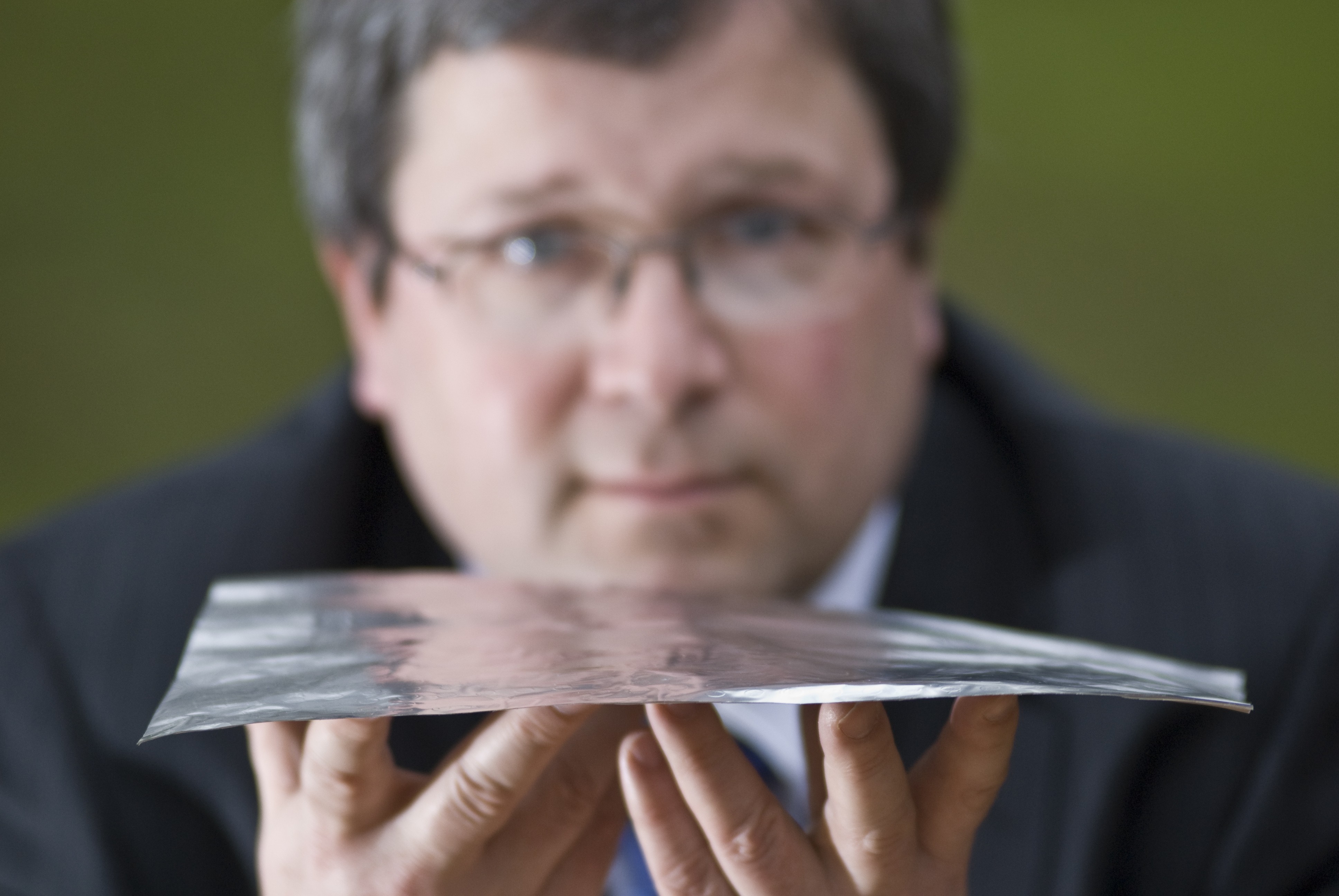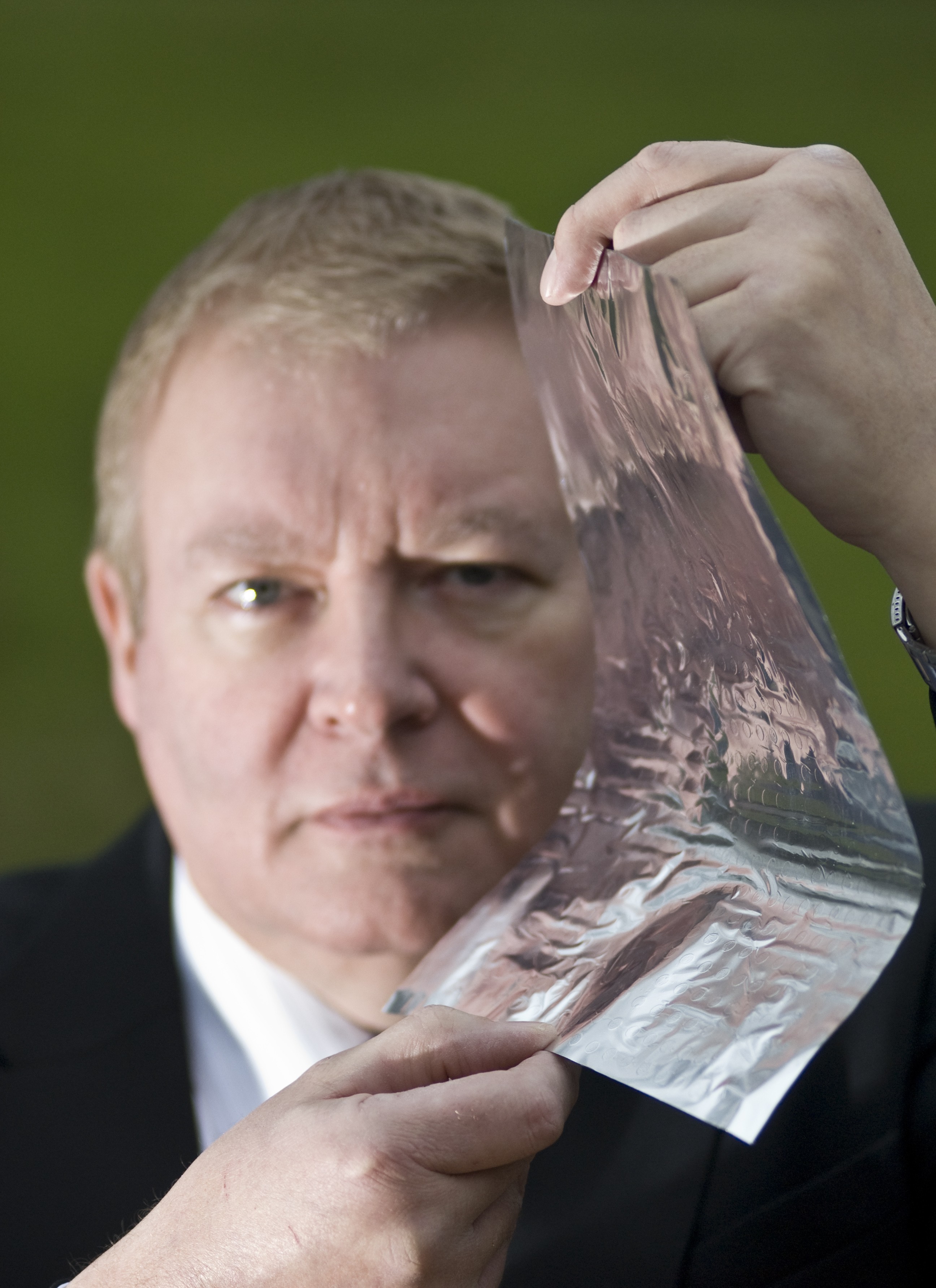Flat, Flexible Loudspeaker Under 0.25mm Thick
British engineers have created the ultimate speaker, only .25mm thick using a flexible laminate with layers of conducting and insulating materials.

British engineers have created speakers that are only .25mm thick using a flexible laminate with layers of conducting and insulating materials.
Given that today is April Fool's Day, it's hard to not be a little cautious when reading online material. Even our very own Tuan fell victim to the April Fool's epidemic, throwing up a silly notion that this news outlet would focus primarily on Apple coverage. With that in mind, some of the external articles published today by other news outlets should be approached with caution although the whole April Fool's bit is all in good humor.
On that note, Register Hardware posted a little article about British engineers creating an extremely thin and flexible speaker. Called the Flat, Flexible Loudspeaker (FFL), the device is less than 0.25mm thick. That sounds a bit incredible to say the least, perhaps even suspicious given the date, however the device supposedly passes an electrical signal through a flexible laminate--a thin, clear material consisted of numerous layers containing conducting and insulating polymers. Thus, the sound emanates from the entire surface--moving air as a bulk mass--rather than from one central point like traditional speakers; this provides a more evenly distributed sound. Simply put, the speaker laminate operates as a perfect piston resonator.
Is this thing for real? For a while, that was the question, however as the morning rolled on, more media outlets began to cover the paper-thin speaker, even the BBC News. Perhaps, then, this speaker invention was indeed for real. Evidently, after finding the original source, the FFL originated at the Warwick University, created by a team of engineers led by Dr. Duncan Billson and Professor David Hutchins. A spin-off audio company--Warwick Audio Technology--came into being to actually manufacture and sell the FFL speakers for a later date.
"We believe this is a truly innovative technology. Its size and flexibility means it can be used in all sorts of areas where space is at a premium," said Warwich Audio Technology CEO Steve Couchman.

Will the new invention change the face of home theater systems? It's quite possible. Couchman described several scenarios actually, one illustrating the speakers mounted into a tiled ceiling. Other implications could utilize the speakers like a printed poster hanging on a wall, or a strange design wrapped around a lampshade. The speakers could also be useful in PA systems. In fact, Warwick Audio Technology has already received interest from audio-visual companies and car manufacturers, with the latter particularly interested in how the paper-thin speaker can direct sound.
"The sound produced by FFLs can be directed straight at its intended audience," he told the BBC. "The sound, volume, and quality does not deteriorate as it does in conventional speakers which means that public announcements in passenger terminals could be clearer, crisper and easier to hear."
The company said that the flexible speakers will be commercially available by the end of the year. Will the FFL replace traditional speakers used today? Couchman believes so, and he may be right: look at how LCD screens have replaced the clunky CRT monitors of day long ago. Still, it would be interesting to see a test sample of the FFL, and how it would endure constant use by the average, family-oriented household. Even though the speakers are incredibly thin, delicate technology such as the FFL would seem to be more prone to damage than current traditional speakers. Then again, maybe not.
So is this an April Fool's joke? Unless the Warwick University has a few clever pranksters taking over it website, this new device is certainly for real, and heading our way by the end of the year.
Get instant access to breaking news, the hottest reviews, great deals and helpful tips.
Kevin started taking PCs apart in the 90s when Quake was on the way and his PC lacked the required components. Since then, he’s loved all things PC-related and cool gadgets ranging from the New Nintendo 3DS to Android tablets. He is currently a contributor at Digital Trends, writing about everything from computers to how-to content on Windows and Macs to reviews of the latest laptops from HP, Dell, Lenovo, and more.
-
brendano257 "taking over it website" please don't tell me your making spelling mistakes for April fools... =PReply -
they've been making thin loudspeakers for years that generate sound by passing electricity through the material. They reproduce highs execelently, but are not able to produce the lows. Normally these panels are paired with a conventional subwoofer for the full range of audio.Reply
-
solymnar xrealm is spot on.Reply
Though this is a somewhat new approach I would have a hard time imagining it hitting lows very well. Still without actually seeing the finished product anything is possible.
Makes me curious about its actual specs, power consumption, usable frequency range, durability, cost, etc. etc. -
daft xrealm is correct.Reply
this reminds me of the story physorg did back in november about the carbon nanotube based speakers that would heat the air up an rapidly cool down to make the frequencies.
http://www.physorg.com/news144939492.html -
LuxZg "Flat" speakers are for real, even though I've never seen any that look like the ones on pictures in article.Reply
There is also a possibility of directing sound to a certain area, so for an example you could be watching TV with these speakers, watching some "loud" action movie, yet your wife and kids could be sleepinga meter or two away without noticing it at all (sound-wise, I'm not speaking about blinking lights from TV screen :) ). Oh, and this is not headphones, so no problems with head-worn equipment.
If this is based upon same technologies and principles, it would allow a car where each seat has speakers directed at the person sitting in them, and allow each person to listen to its own music or radio station, without headphones, and allowing to normaly hear outer-sounds (which is very important for a driver).
So yeah, I don't think this one is an Aprils fools joke. I just hope they can really market it as soon as they say, and hopefully not for a huge price premium vs regular speakers.
Cheers!
Luka -
Airrax xrelm20 is correct, they have been making these for quite some time, generally referred to as electrostatic speakers. There are three problems with electrostatic speakers though. The first is bass response, basically there is none. The speaker, due to its construction simply cannot reach lower frequencies, they are paired with a sub to get to this range (as xrelm20 said). The second problem is voltage. The speaker works by charging a membrane and placing it between two panels that alternate charge quickly. For there to be enough of a difference between the panels to drive the membrane, they have to have a large voltage pass through them (large voltage, not large amperage). The third thing is cost. I have seen a cheap pair of these, in a local high end home theater store, for $10,000 if I remember correctly.Reply
What could be important about these FFC's is not that they are some new tech, but that they are relatively inexpensive to manufacture and they require little power to operate. Having an electrostatic speaker that doesn't need a costly amplifier would be a great thing. -
marokero There's no replacement for displacement of air when it comes to low frequencies. If you can't move enough air you don't feel it. That said, that's interesting technology... I imagine this tech mated to flexible printed screens of the future. Both sight and sounds would come from the same exact source.Reply -
lamorpa Speakers reporduce recorded sounds by moving air. For lower frequencies, where sound pressure is created only when a large amount of air is moved, this technology cannot work by definition. The membrane of all speakers is thin, or else it would weigh too much and not be correctly responsive. Basically, this article is written by the uninformed (about basic physics) for the uninformed.Reply
